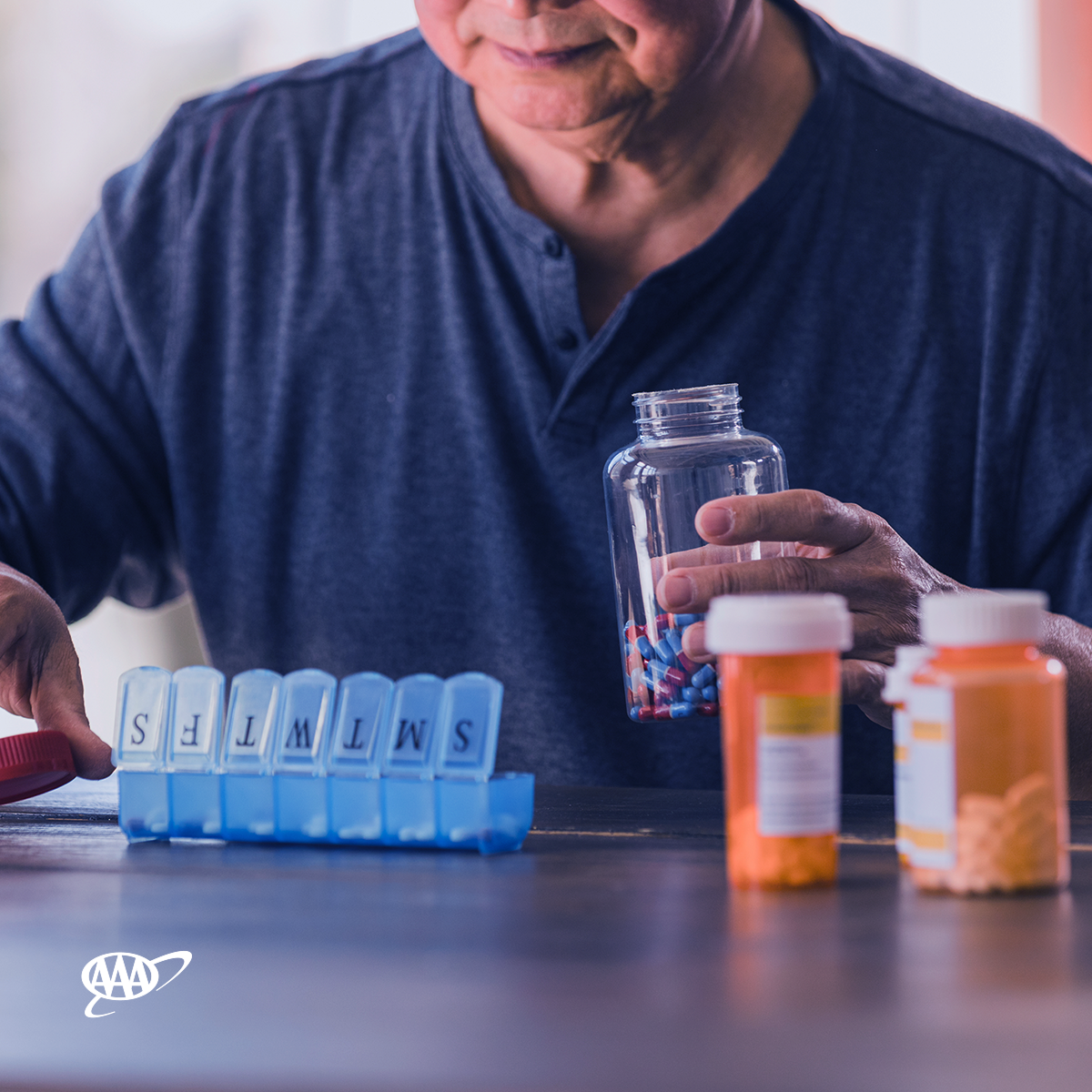Bad Medicine? Many Drivers Hit the Road on Potentially Impairing Medications
Bad Medicine? Many Drivers Hit the Road on Potentially Impairing Medications

Nearly half of the drivers surveyed said they used one or more potentially impairing medications in the past 30 days, according to new research by the AAA Foundation for Traffic Safety. The proportion of those choosing to drive is higher among those taking multiple medications. More concerning, many who took these medications to combat depression, pain, or sleep issues were not warned by their healthcare provider regarding the possible dangerous impact on driving.
Moreover, drivers who take one or more of these medications may be unaware of the possible impacts on their driving ability. Many potentially driver impairing (PDI) medications have potential effects that can be dangerous when mixed with driving, including dizziness, sleepiness, fainting, blurred vision, slowed movement, and attention problems.
AAA recommends that the advice given by medical and pharmacy professionals about the dangers of mixing over-the-counter and prescribed medications with driving must be vastly improved and more consistently emphasized to maximize safety.
“Our research finds that many drivers are taking one or more potentially impairing medications before getting behind the wheel,” said Dr. David Yang, executive director of the AAA Foundation for Traffic Safety. “It is important for medical professionals to offer clear consultation to their patients of the possible risks and ensure they understand them.”
This study focused on the prevalence of recent use by drivers of commonly used prescriptions and over-the-counter medications such as antihistamines, cough medicines, antidepressants, prescription pain medicines, muscle relaxants, sleep aids, and amphetamines. These are PDI medications, but not all drivers who reported taking them were impaired. As the term implies, PDI medications can potentially impair driving, but effects in individuals may vary.
Antihistamines and cough medicines—many available without a prescription—were most commonly used. However, the proportion of drivers that reported driving after use was highest for those who reported amphetamine use, such as Adderall and Dexedrine, as shown in the table below.
The percentage of drivers who reported driving after using various potentially driver impairing medications within the past 30 days, United States, July–August 2021
|
|
Antihistamines and/or cough medicines |
Antidepressants |
Rx pain medications |
Muscle relaxants |
Sleep aids, barbiturates, or benzodiazepines |
Amphetamines |
1 or more of these medications* |
2 or more of these medications* |
3 or more of these medications* |
|
All drivers |
38.9% |
60.8% |
32.6% |
21.6% |
9.2% |
73.1% |
45.0% |
63.3% |
70.8% |
Base: U.S. residents ages 16+ with a driver’s license who reported driving and taking the corresponding medicine (or number of medicines) in the past 30 days, weighted to reflect the U.S. population. *Not necessarily at the same time.
Research results found that up to half of drivers who were prescribed and took each type of PDI medication did not report receiving a warning from their medical provider or pharmacist regarding its possible impacts on driving. But those who did receive a warning were 18% less likely to get behind the wheel after use, highlighting the potential benefit of healthcare providers’ counseling to reduce medication-impaired driving.
“Understandably, it may seem impossible for patients to maintain their independence behind the wheel and use the medications they need to stay healthy. It turns out we can achieve both goals, but not without guidance from our doctor or pharmacist,” said Jake Nelson, AAA’s director of traffic safety advocacy and research. “Our research suggests too few medical professionals provide these warnings or suggest ways patients can navigate this tough challenge.”
Anyone taking PDI medications should discuss with their doctor or pharmacist ways to preserve safe driving, such as adjusting medication doses, the timing of those doses, or alternative medications to treat medical conditions without causing driver impairment.
For drivers, AAA recommends these safety tips to keep in mind:
- Don’t Underestimate the Risks of Driving after Using Medications—Over the past three decades, society has realized the dangers associated with drunk driving. According to the latest AAA Foundation Traffic Safety Culture Index, most drivers (94.5%) consider driving after drinking alcohol very or extremely dangerous. But, only 87% feel the same about driving after using potentially impairing medications.
- Be Aware of Your Options—With advice from your doctor or pharmacist, you can successfully treat your medical condition and maintain your ability to drive safely. Options include, but aren’t limited to, timing your doses to avoid times when you need to drive, adjusting how much medication you take, or even exploring alternative medications that treat your symptoms without causing impairment.
- Advocate for Yourself—Become a better advocate for yourself during visits to the doctor, when filling a prescription at the pharmacy, or purchasing over-the-counter medications. AAA recommends that consumers be proactive by asking the doctor or pharmacist how the medications could affect driving ability and how to avoid those risks while treating their medical condition. If the medicine is available over the counter, read the warnings, heed them, or consult a pharmacist for advice.